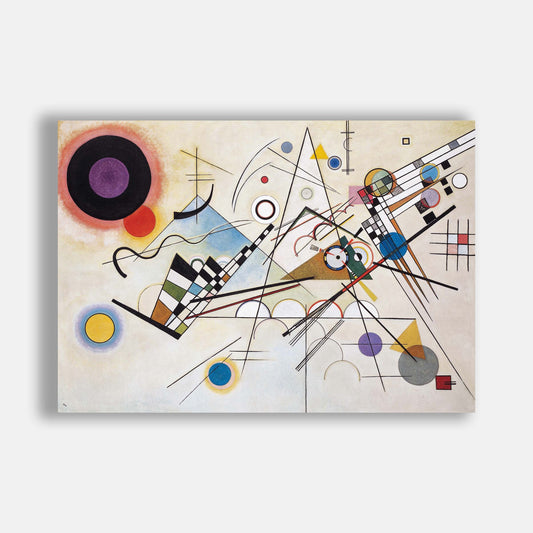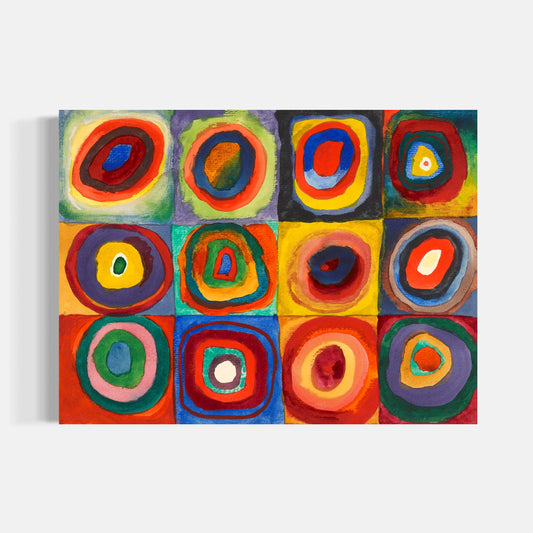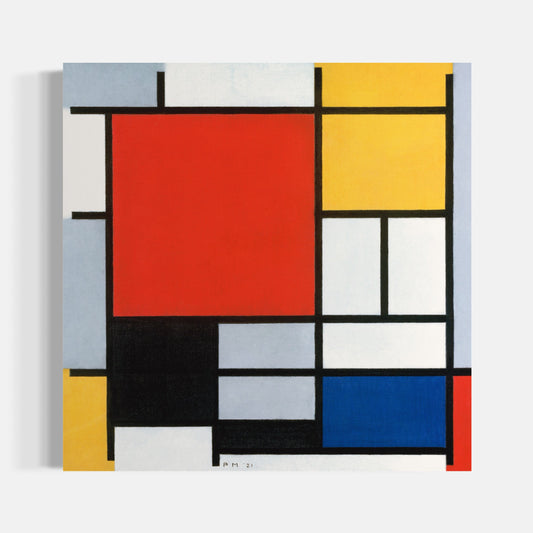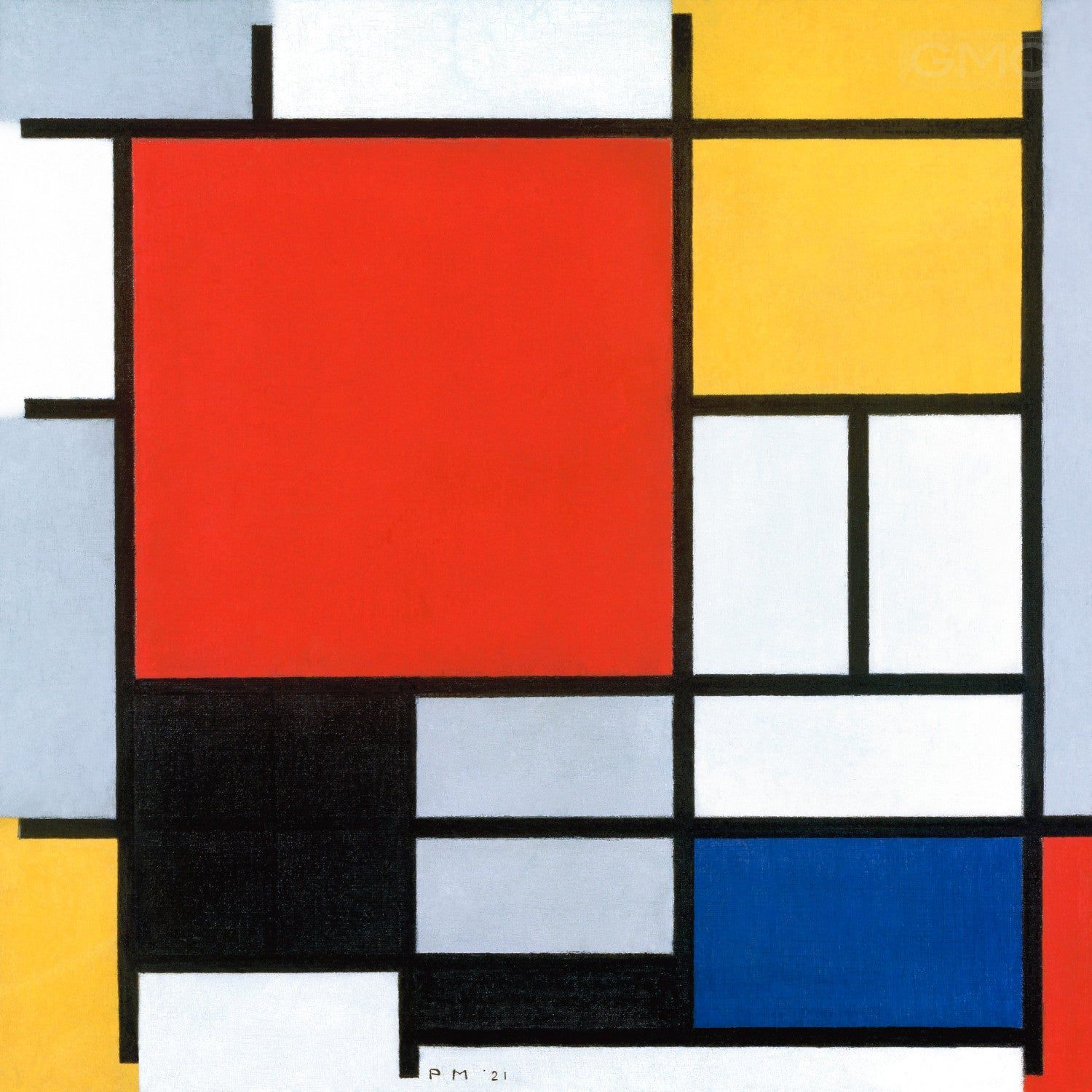
Abstract Art
Era: 1920+
Abstract Art is characterized by the abandonment of the faithful representation of reality, it is a major artistic movement of the 20th century. Unlike figurative styles, Abstract Art focuses on shapes, colors, lines and textures to express emotions, concepts or states of mind. He seeks to transcend traditional visual perception to reach a deeper and more universal dimension.
Its pioneers include artists like Wassily Kandinsky, Piet Mondrian and Kazimir Malevich. Kandinsky, one of the founders of the movement, believed that art could evoke feelings in a similar way to music, through the use of colors and non-figurative shapes. His works, like “Composition VII” use dynamic shapes and vibrant color palettes to create an intense visual experience.
Mondrian, with his neoplasticist style, reduced art to its most essential elements: straight lines and primary colors. His work “Composition with red, yellow and blue” illustrates this minimalist and geometric approach.
Malevich, with his suprematism, pushes abstraction to the extreme by creating works like “Black Square on White Background”, where radical simplicity invites deep contemplation.
In summary, Abstract Art is an exploration of pure form and color, freed from the constraints of realistic representation, aiming to communicate emotions and ideas in a direct and universal way.
Remarkable Artwork

Composition with Red, Blue and Yellow
Piet Mondrian
Year of creation: 1921
Estimated Market Value: Priceless
Original Format: 55 x 55 cm
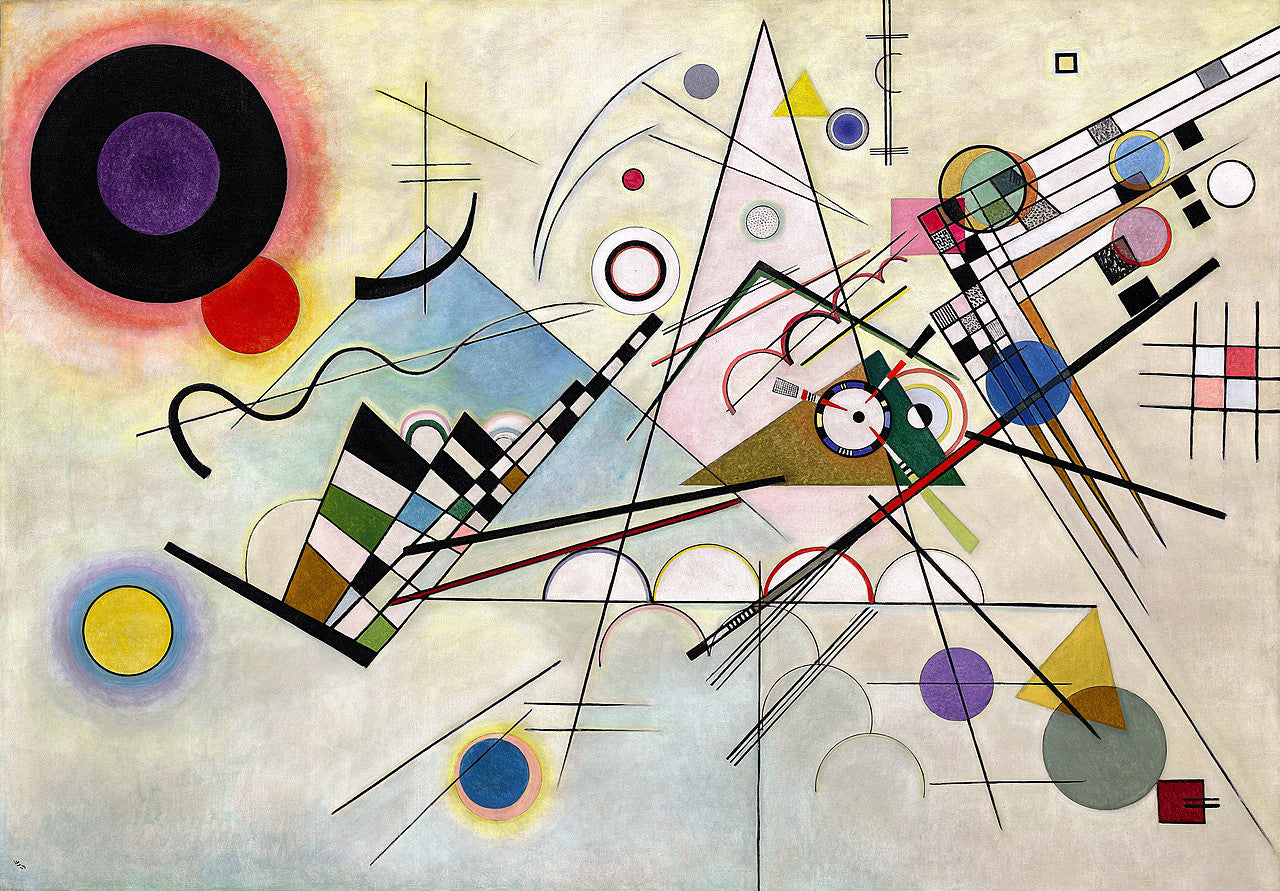
Composition VIII
Wassily Kandinsky
Year of creation: 1923
Estimated Market Value: Priceless
Original Format: 140 x 201 cm
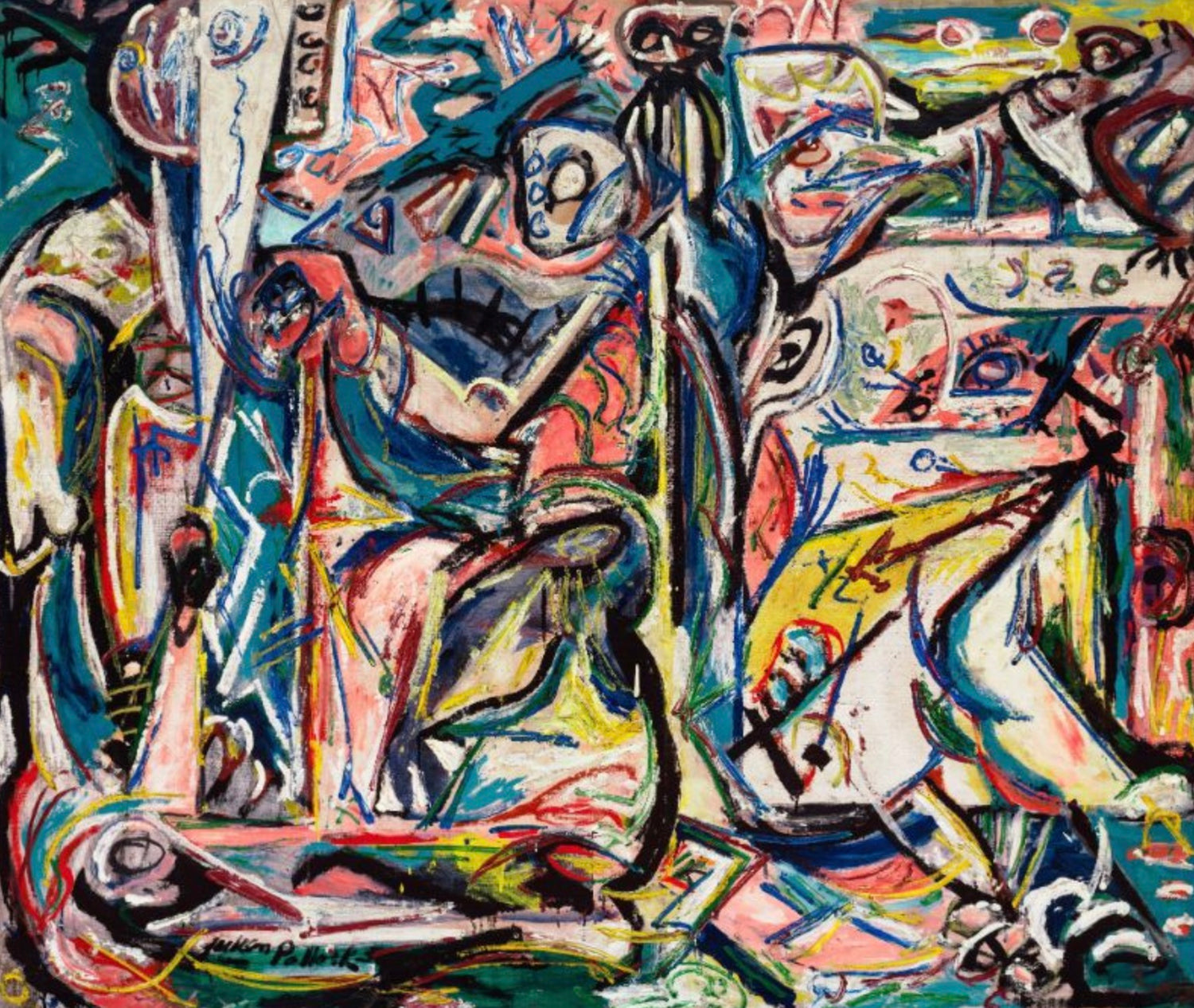
Number V
Jackson Pollock
Year of creation: 1948
Estimated Market Value: 140 M$
Original Format: 243,8 x 152,4 cm
Available to Purchase
-
Yellow Red Blue
Regular price From $327.00 CADRegular priceUnit price / per -
Composition VIII
Regular price From $360.00 CADRegular priceUnit price / per -
Color Study
Regular price From $99.00 CADRegular priceUnit price / per -
Compo with Large Red Plane...
Regular price From $239.00 CADRegular priceUnit price / per




